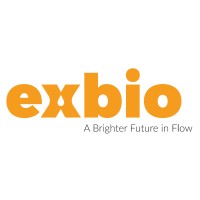CD36 Monoclonal / APC-Cy7 / TR9
Product Details
| Description | CD36 (fatty acid translocase, FAT) is an 88 kDa ditopic glycosylated protein that belongs to the class B family of scavenger receptors. CD36 is expressed by most resting marginal zone B cells but not by follicular and B1 B cells, and it is rapidly induced on Follicular B cells in vitro upon TLR and CD40 stimulation. CD36 does not affect the development of B cells, but modulates both primary and secondary antibody response. Similarly to glucose transporter GLUT4, CD36 is translocated from intracellular pools to the plasma membrane following cell stimulation by insulin. In mouse, CD36 is responsible for gustatory perception of long-chain fatty acids. | |
|---|---|---|
| Conjugate | APC-Cy7 | |
| Clone | TR9 | |
| Target Species | Human | |
| Applications | FC | |
| Supplier | EXBIO | |
| Catalog # | Sign in to view product details, citations, and spectra | |
| Size | ||
| Price | ||
| Antigen | ||
| Host | ||
| Isotype |
About CD36
The protein encoded by this gene is the fourth major glycoprotein of the platelet surface and serves as a receptor for thrombospondin in platelets and various cell lines. Since thrombospondins are widely distributed proteins involved in a variety of adhesive processes, this protein may have important functions as a cell adhesion molecule. It binds to collagen, thrombospondin, anionic phospholipids and oxidized LDL. It directly mediates cytoadherence of Plasmodium falciparum parasitized erythrocytes and it binds long chain fatty acids and may function in the transport and/or as a regulator of fatty acid transport. Mutations in this gene cause platelet glycoprotein deficiency. Multiple alternatively spliced transcript variants have been found for this gene. [provided by RefSeq, Feb 2014]
The protein encoded by this gene is the fourth major glycoprotein of the platelet surface and serves as a receptor for thrombospondin in platelets and various cell lines. Since thrombospondins are widely distributed proteins involved in a variety of adhesive processes, this protein may have important functions as a cell adhesion molecule. It binds to collagen, thrombospondin, anionic phospholipids and oxidized LDL. It directly mediates cytoadherence of Plasmodium falciparum parasitized erythrocytes and it binds long chain fatty acids and may function in the transport and/or as a regulator of fatty acid transport. Mutations in this gene cause platelet glycoprotein deficiency. Multiple alternatively spliced transcript variants have been found for this gene. [provided by RefSeq, Feb 2014]
About APC-Cy7
APC-Cy7 (APC-Cyanine 7) has an excitation peak at 650 nm and an emission peak at 785 nm, and is spectrally similar to APC-CF®750 (Biotium), APC-H7 (BD Biosciences), APC-eFluor™ 780 (Thermo Fisher Scientific), APC-Vio®770 (Miltenyi Biotec) and APC-Fire™ 750 (BioLegend). This dye is a member of the Cyanine® dye family, a trademark of GE heathcare.
APC-Cy7 (APC-Cyanine 7) has an excitation peak at 650 nm and an emission peak at 785 nm, and is spectrally similar to APC-CF®750 (Biotium), APC-H7 (BD Biosciences), APC-eFluor™ 780 (Thermo Fisher Scientific), APC-Vio®770 (Miltenyi Biotec) and APC-Fire™ 750 (BioLegend). This dye is a member of the Cyanine® dye family, a trademark of GE heathcare.
Experiment Design Tools
Panel Builders
Looking to design a Microscopy or Flow Cytometry experiment?
Validation References
Reviews & Ratings
| Reviews |
|---|
Looking for more options?
1255 CD36 antibodies from over 43 suppliers available with over 99 conjugates.





